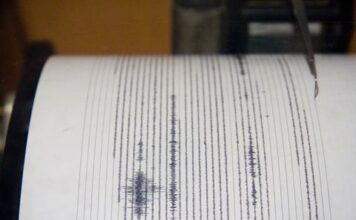I used commercial buttermilk recently in a biscuit recipe, and
since I had some left over, decided to see what else I could use it
in.
But first I was curious
… why is it called buttermilk?
I used commercial buttermilk recently in a biscuit recipe, and since I had some left over, decided to see what else I could use it in.
But first I was curious … why is it called buttermilk?
To learn more, I turned to the Internet. A search on “buttermilk” produced some interesting information. According to David B. Fankhauser, Ph.D., professor of biology and chemistry, University of Cincinnati Clermont College in Batavia, Ohio, commercial buttermilk is different from the old-fashioned kind which was a by-product of making butter. To quote him:
“In ‘olden times,’ farm families would let freshly milked milk sit for half a day and skim off the cream which had risen. This cream would be set aside in a cool place, around 50-60 F. Each milking’s cream would be added until several gallons had accumulated. In the meantime, naturally occurring bacteria in the cream would cause it to slightly sour. This souring increases the efficiency of churning. The accumulated, slightly sour, cream would be churned at the optimum temperature (approximately 58 F) such that the butter was firm enough to separate out, but soft enough to stick together into a mass…. The remaining liquid after the butter was removed was called … ‘old fashion buttermilk,’ which is slightly sour, has the consistency of milk, but is slightly paler. It has flakes of butter floating in it … cultured buttermilk (is) thick and tart, old fashioned being thin, and slightly acid, depending on how sour the cream got before it was churned.”
So apparently the main similarity between old-fashioned buttermilk and today’s commercial version is that they are both slightly fermented.
It is the fermented lactic acid which gives commercial buttermilk its tangy flavor (similar to yogurt) and helps create its leavening power in quick breads and waffles.
Recipes that call for buttermilk usually also require baking soda, since the bubbles produced by the reaction between the soda and the lactic acid are what cause the biscuits to rise.
However, when I wanted to try buttermilk waffles, I discovered I was out of baking soda, so I substituted self-rising flour (which is ordinary flour to which baking powder and salt have been added) and used the required amount of baking powder as well. The resulting waffles were light and buttery tasting.
Soda-free Buttermilk Waffles
1 3/4 cups self-rising flour
1 Tbs. baking powder
1 Tbs. sugar
1/2 tsp. salt
4 large eggs
1/2 stick unsalted butter
1 1/2 cups buttermilk
Step 1: Preheat waffle iron.
Step 2: Melt the butter (about 1 minute in the microwave) and set aside.
Step 3: Sift together into a large bowl the flour, baking powder, sugar and salt.
Step 4: Whisk together in another bowl the eggs, butter and buttermilk.
Step 5: Make a well in the center of the dry ingredients and pour in the wet ingredients. Whisk them together gently for a few strokes. The batter should remain slightly lumpy.
Step 6: Spoon about 1/2 to 2/3 cup batter at a time into the center of the waffle iron and spread to the edges with the back of a spoon. Close the lid until the waffle is golden brown.
Waffles may be kept warm in a 200 degree oven while you finish cooking the rest. Serve with butter and room-temperature maple syrup or jam.
These waffles also freeze well for later use. Wrap individually in plastic wrap and store in a sealed plastic bag. To reheat, toast in your toaster on the lightest setting.
In spite of the recent rain, our yearly two-week heat wave can’t be far away. Here is an easy and refreshing recipe adapted from a Web site called suzette. typepad.com/the–joy–of–soup:
Buttermilk Soup
(serves 2)
2 cucumbers, peeled and seeded
2 cups buttermilk
fresh dill
salt and pepper
scallions
Step 1: Cut up the cucumber in to tiny dice.
Step 2: Add the buttermilk.
Step 3: Season with dill, salt and pepper.
Step 4: Use scallions or extra dill to garnish.
And finally, did you know that ranch dressing didn’t always come out of a bottle? In the 50s and 60s, before it was even packets of seasoning mix, it was a dressing served at the Hidden Valley Guest Ranch near Santa Barbara.
It was served to as many as 300 people a night when the place was in its heydey as a dude ranch/college hangout for partying students from the nearby University of California campus.
Eventually the originator, Steve Henson, was shipping packets all over the world before he joined with a larger company to manage the huge demand.
I can attest to its popularity, because when I was living in Amsterdam, one of my colleagues always asked me to bring her a supply of the seasoning packets every time I visited the United States.
Here is a recipe that pretty well captures the original flavor, adapted from the Joy of Cooking:
Ranch Dressing
(about 1 cup)
1 clove garlic, peeled
2 to 3 pinches of salt
3/4 cup buttermilk
2 to 3 Tbs. fresh lime juice
1 Tbs. minced fresh cilantro or parsley
1 Tbs. snipped fresh chives
salt and ground black pepper to taste
Step 1: Mash the garlic and salt together (using a mortar and pestle or wooden spoon and bowl) until a paste is formed.
Step 2: Remove to a jar with a tight-fitting lid.
Step 3: Add the buttermilk, lime juice and herbs and shake until well blended.
Step 4: Taste and adjust the seasonings.
If you prefer a creamier consistency, or want to use the dressing as a dip, stir in 1/3 to 1/2 cup mayonnaise or sour cream.













